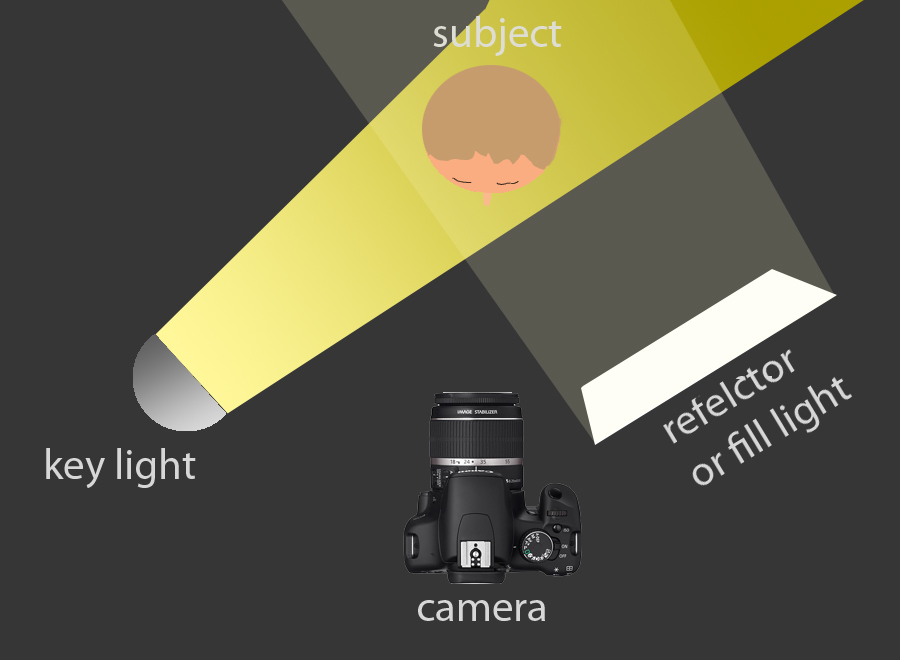Sequence viewing > Light & Lighting - Resource - ©
Lloyd Godman
Light in Photography - Rembrandt lighting
Rembrandt lighting is a lighting technique used in studio portrait Photography. It can simply be achieved using one KEY or main light which is brighter and a reflector, or a second light which is much dimmer. The technique is popular because it is capable of producing images which appear both natural and compelling with a minimum of equipment and adds a sense of depth or a 3rd dimension to the face.
|
 |
Rembrandt lighting is characterized by a small illuminated triangle under the eye of the subject, on the less illuminated side of the face which is created by the angle of the key light falling across the far side of the subjects face. It is named after the Dutch painter Rembrandt, who was known for his use of this lighting in many of the subjects who appear in his paintings.
Normally, the Key Light is placed high and to one side at the front, and the fill light or a reflector is placed half-height and on the other side at the front. The fill light is set to about half the power of the key light, with the subject, if facing at an angle to the camera, with the key light illuminating the far side of the face.
The key in Rembrandt lighting is creating the triangle or diamond shape of light underneath the eye. One side of the face is lit well from the main light source while the other side of the face uses the interaction of shadows and light, also known as Chiaroscuro, to create this geometric form on the face.
It is argued that the triangle should be no longer than the nose and no wider than the eye. This technique may be achieved subtly or very dramatically by altering the distance between subject and lights and relative strengths of main and fill lights.
Want to learn more? - do a workshop or one on one with Lloyd Godman
|